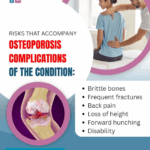
Back pain is one of the most common complaints among adults, often interfering with daily activities and overall quality of life. While occasional discomfort may stem from strain or poor posture, persistent or worsening back pain can be a sign of an underlying condition — one such possibility is spondylosis.
But what exactly is spondylosis, and how do you know if it’s the root cause of your discomfort? Let’s explore the signs, causes, and what you can do to find lasting relief.
What Is Spondylosis?
Spondylosis is a general term for age-related wear and tear of the spine. It commonly affects the cervical (neck), thoracic (mid-back), and lumbar (lower back) regions. Over time, the spinal discs lose water content, become thinner, and may lead to the development of bone spurs or disc degeneration. This condition can lead to pain, stiffness, and in some cases, nerve compression.
Although most often associated with aging, spondylosis can also be triggered or worsened by lifestyle factors, genetics, injuries, and poor posture.
Common Signs Your Back Pain Might Be Spondylosis
While back pain is a general symptom, certain characteristics may suggest that spondylosis is to blame. Here’s what to watch for:
1. Chronic or Persistent Pain
Pain that lasts more than a few weeks, especially in the lower back or neck, may be due to degenerative changes in the spine. The pain may worsen with activity or prolonged sitting.
2. Morning Stiffness
If your back feels particularly stiff or sore when you wake up and improves slightly as you move around, this could indicate early degenerative changes in your spine.
3. Radiating Pain
Spondylosis can lead to nerve compression, which might cause radiating pain into the buttocks, legs, shoulders, or arms depending on which part of the spine is affected.
4. Tingling or Numbness
When spinal nerves are compressed, you might experience sensations of tingling, numbness, or weakness in your extremities. This is especially common in lumbar or cervical spondylosis.
5. Limited Flexibility
If you notice reduced flexibility in your neck or back, or difficulty bending, turning, or twisting, it could be a sign of spondylosis-related stiffness.
What Causes Spondylosis?
Spondylosis is primarily a degenerative condition, but several contributing factors can accelerate its onset or severity:
1. Aging
As we age, our spinal discs begin to lose their elasticity and cushioning ability. This natural process makes individuals more prone to spondylosis after the age of 40.
2. Poor Posture
Sitting for long hours with improper back support, slouching, or working on a computer without ergonomics can strain your spine and speed up degeneration.
3. Repetitive Motion or Strain
Jobs or activities that involve heavy lifting, twisting, or repetitive movement can put undue pressure on the spine.
4. Injury
Past injuries to the spine or back muscles may lead to instability or disc damage, increasing the risk of spondylosis.
5. Obesity
Excess body weight adds pressure to the spine, especially the lumbar region, and can quicken the deterioration of spinal structures.
6. Genetics
If your parents or close relatives have suffered from spine disorders or early-onset spondylosis, you might be at higher risk.
When to Seek Medical Help
While occasional back pain might not be serious, recurring or worsening pain should never be ignored. Early diagnosis can prevent further degeneration and help in better management.
If you’re experiencing the symptoms mentioned above, it’s time to consult a specialist. For those in Pune, Dr. Mandar Borde offers expert consultation and advanced Back Pain Treatment in Swargate, customized to each patient’s condition.
Spondylosis Treatment Options
The good news is that many cases of spondylosis can be managed effectively without surgery. Here’s a look at common treatment approaches:
1. Physical Therapy
A structured exercise program designed by a physiotherapist can strengthen the spine, improve flexibility, and reduce nerve pressure.
2. Medication
Pain relievers, anti-inflammatory drugs, and muscle relaxants are often prescribed to ease pain and inflammation.
3. Lifestyle Changes
Improving posture, incorporating regular low-impact exercises like walking or swimming, and maintaining a healthy weight can significantly improve symptoms.
4. Epidural Steroid Injections
In cases where nerve pain is significant, corticosteroid injections can provide temporary relief.
5. Surgical Intervention
Surgery may be considered when conservative methods fail, or if there is significant nerve compression leading to loss of function.
If you’re seeking Spondylosis Treatment in Swargate, Dr. Mandar Borde specializes in diagnosing and managing spine-related conditions with a focus on personalized, non-invasive care.
Preventing Spondylosis
While you can’t stop aging, you can take steps to protect your spine:
- Maintain good posture while sitting and standing
- Exercise regularly to strengthen your back and core
- Use ergonomic furniture at work
- Avoid lifting heavy objects improperly
- Quit smoking, as it can accelerate disc degeneration
- Maintain a healthy weight
Conclusion
Spondylosis is a common cause of back pain, especially as we age, but recognizing its early signs can help you manage the condition effectively and avoid complications. If you’re living in or around Pune and are troubled by chronic back issues, don’t delay — seek professional Back Pain Treatment in Swargate to regain your mobility and quality of life.
Dr. Mandar Borde offers comprehensive and compassionate care for spine and joint conditions, using the latest tools in diagnosis and therapy. Take the first step toward a pain-free life — your back will thank you!

 Select an element to maximize. Press ESC to cancel.
Select an element to maximize. Press ESC to cancel.

